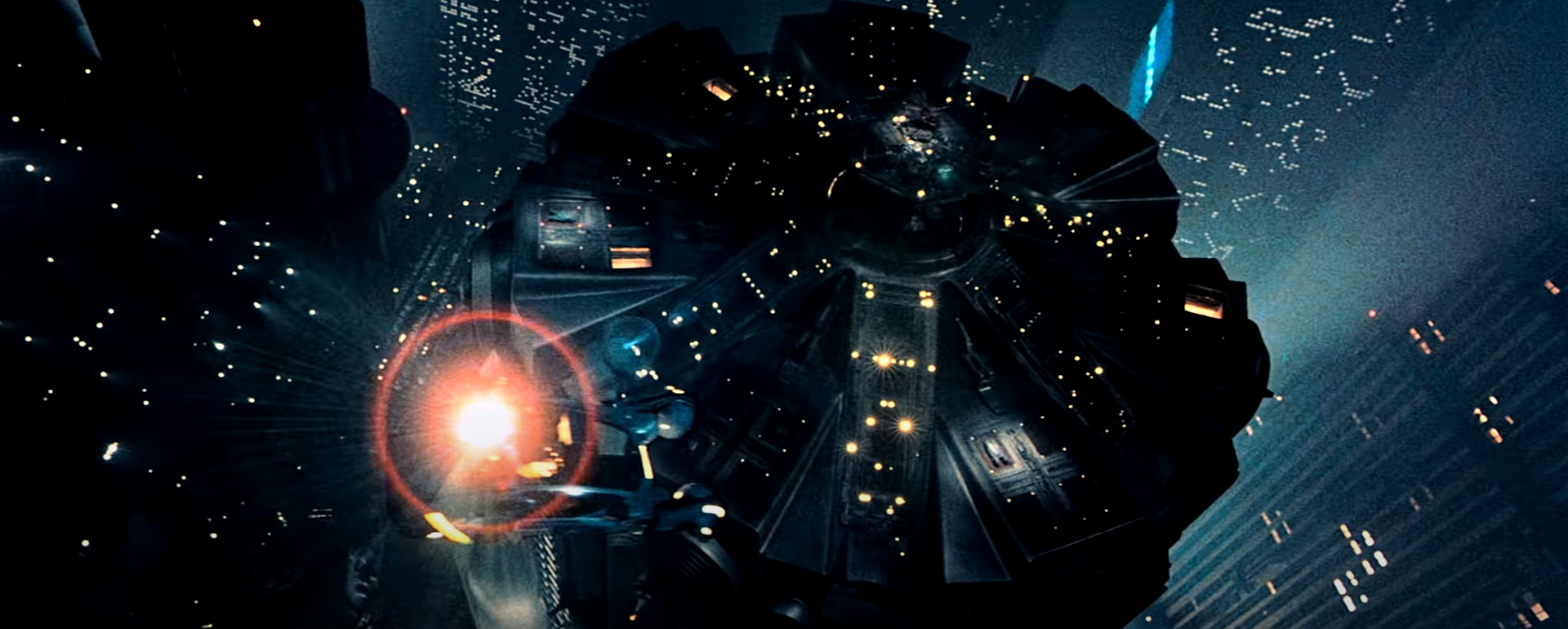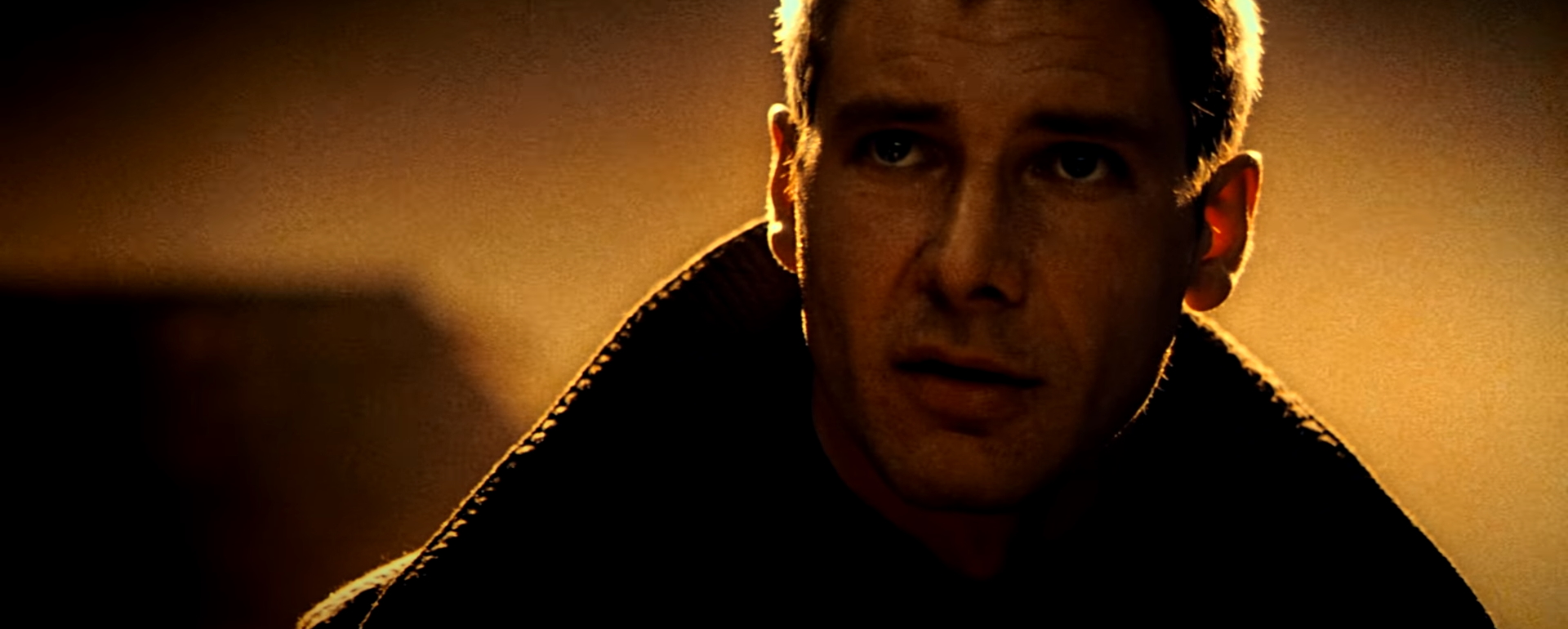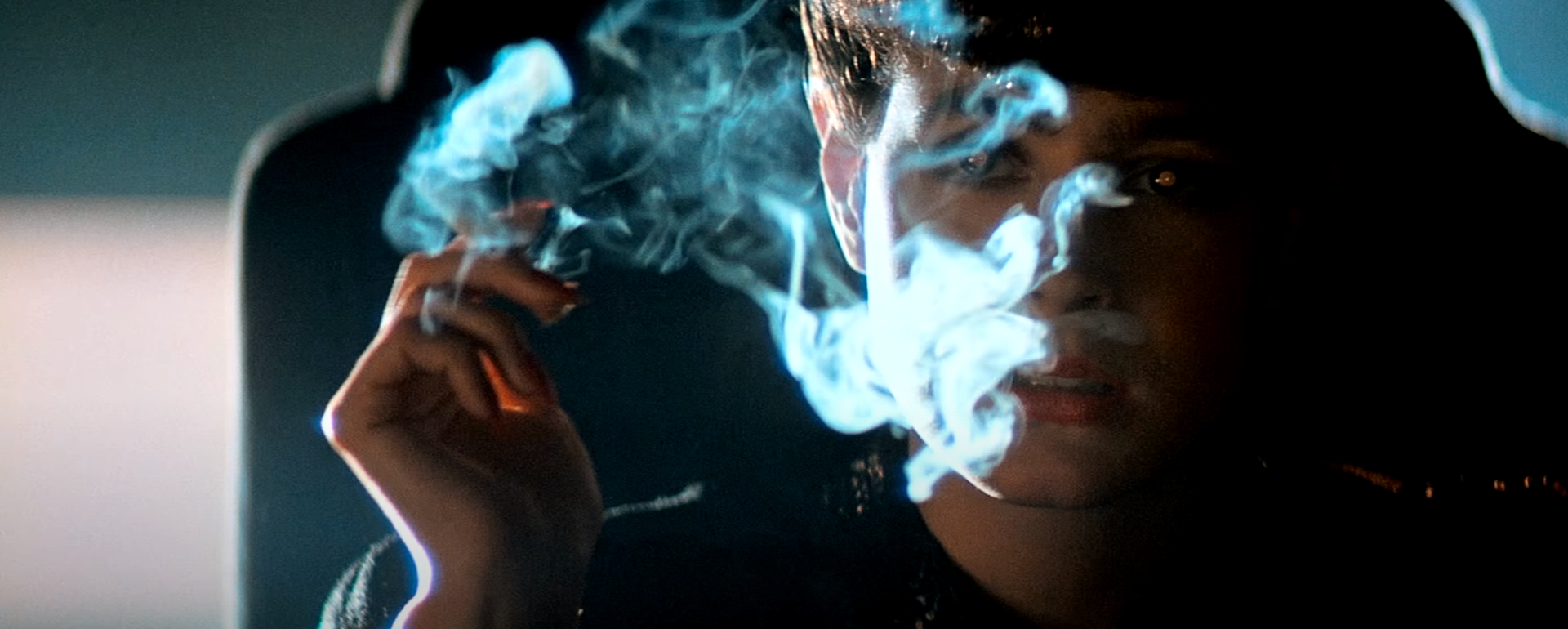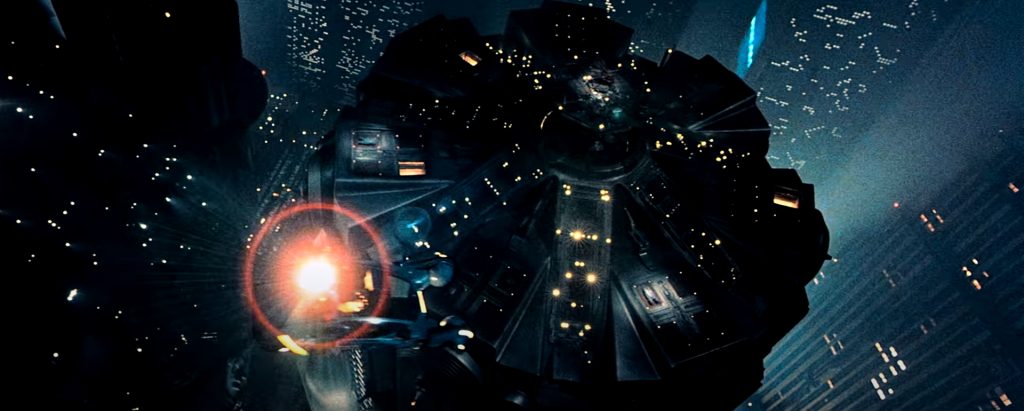Blade Runner is a future-noir science fiction film released in 1982. It was directed by Ridley Scott and written by Hampton Fancher and David Peoples.
The film stars Harrison Ford as Rick Deckard, Sean Young as Rachael, Rutger Hauer as Roy Batty, and Edward James Olmos as Gaff. Despite initially being a commercial flop, the film went on to become one of the most highly regarded and influential works of the future-noir genre, as evidenced by parts of the film being referenced and sampled by numerous films, tv shows and videogames in the years after its release. The film’s script is loosely based on the 1968 novel Do Androids Dream of Electric Sheep? written by Phillip K. Dick, which is considered to be the foundation of the cyberpunk subgenre. By extension, the film has also been greatly influential to the cyberpunk movement.
In 1983, Blade Runner was nominated for Best Original Score – Motion picture in the Golden Globes, Best Art Direction – Set Decoration and Best Effects, Visual Effects in the Academy Awards, and Best Film Editing, Best Make Up Artist, Best Score, Best Sound, Best Special Visual Effects in the BAFTA Awards. It went on to win Best Cinematography, Best Costume Design and Best Production Design/Art Direction in the BAFTAs that year.
A fact that may confuse some of the film’s viewers today is that old reviews of it reference things that do not happen in the version you might see. This is because the film has had six published versions, not including a workprint version that was screened without the director’s approval. Without going into details on how each version is unique, the biggest changes include changing the film’s ending, the amount of nudity and violence shown, the removal of voice-overs, an added dream sequence that wasn’t present in the first several versions, subsequently prolonging the dream sequence in the next version, and drastically different lighting in various scenes. What I would personally recommend is to focus on the Director’s Cut and the Final Cut and simply ignore all the rest. These were released in 1992 and 2007, respectively. The plot in the two is the same so it comes down to personal choice. The Final Cut is the darker version with more intense violence and a much grimier city, whereas the Director’s Cut fixes a few tiny issues that you weren’t likely to notice anyway and has digitally remastered visuals that often end up changing the colors of the original scenes.

Although the film is set in the early 21st century, it is in fact very futuristic. In this version of our times, the Tyrell Corporation has developed human-like robots called replicants, but the project backfires when the replicants became too human-like and begin fighting for their freedom. The fight takes place mostly off-screen as we are shown but a snippet of it, happening somewhere in an off-world colony. These replicants then steal shuttles and head towards Earth. Meanwhile, a special section of the LAPD police force was created to find and “retire” the replicants they can find, and anyone caught helping the replicants in any manner is likewise sentenced to death. Members of this division are called “blade runners”. The story’s protagonist is Rick Deckard, a former blade runner who comes out of retirement when a group of replicants are sighted coming to Earth.
The film follows Deckard as he unravels the mystery of why the replicants are trying to infiltrate Tyrell Corporation with lots of detective work and action sequences to boot. All the while the film sets up a contemplative mood. From the rainswept city streets lit by neon lights from advertisements to Deckard’s long glances and changing facial expressions, the viewer is left with a lot of time to reflect on every detail that was seen so far. Originally all these sequences had voice-overs of Deckard walking the viewer through everything, and the greatest stroke of genius in this film’s subsequent releases was to remove them. You are left on your own with the movie, taking in every scene’s atmosphere and contributing to the mystery’s solution, without it ever feeling forced.

The film’s prolonged gloomy scenes are its brightest moments. The constant pouring rain sets the film’s noir tone. Seemingly simple shots, of passersby, concrete buildings crowded by thick wires, become an attractive sight. All this accompanied by the film’s incredible sound design makes for an unforgettable experience that hasn’t been achieved in film since, barring perhaps its recent sequel. It has a mesmerizing effect that makes the film’s world come alive and invests you into finding out more about the lives of just about every character seen on screen.

One of the film’s most thought-provoking aspects is the recurrent topic of the replicant’s likeness to humans. They are so lifelike that a special test had to be invented to distinguish them from humans, called the Voight-Kampff test. The test consists of 20 to 30 questions that are filtered through a special machine capable of detecting abnormalities in the subject’s responses. Over the movie’s course, the test’s validity is called into question. Without revealing important plot twists, it turns out that some replicants are barely detectible even after a hundred questions have been asked and may even live completely unobserved among humans. The Tyrell Company also starts to experiment with creating replicants that have implanted memories and aren’t aware they’re replicants, although it is unclear if similar experiments had also taken place in the past or not. This insecurity has a vast impact on the film’s plot, creating a feeling of suspicion surrounding who may or may not be a replicant based on what we’ve seen, and calling into question whether there is even a point in finding out or not. After all, if a replicant is so perfectly lifelike that they cannot be distinguished from a human, are they not human?
Deckard eventually completes his investigation, yet since that was only one of the film’s plots, it has an open ending. Despite there being multiple plots to follow, the film is perfectly watchable if you focus on just one. Deckard’s investigation and the plot twists it presents may prove to be satisfactory enough for some viewers not to give their attention away to its philosophical undertones, whereas others may see it as but a necessary distraction from what the questions that really matter and may spend days after a viewing contemplating the ending’s implications. In either case, this movie is an incredibly enjoyable watch, and a classic everyone should become acquainted with. While the movie is a masterpiece alone, I also recommend watching the movie’s sequel, Blade Runner 2049, which is essentially its extension.
If you think you may have missed something, please click on the button below to find out all about your favorite movie or series.

